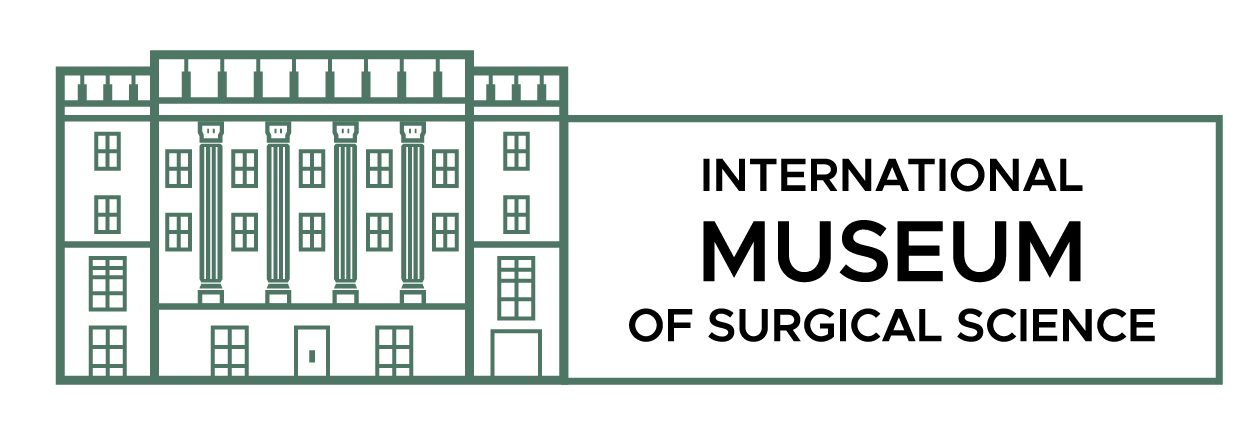Published by Nada Abdelrahim
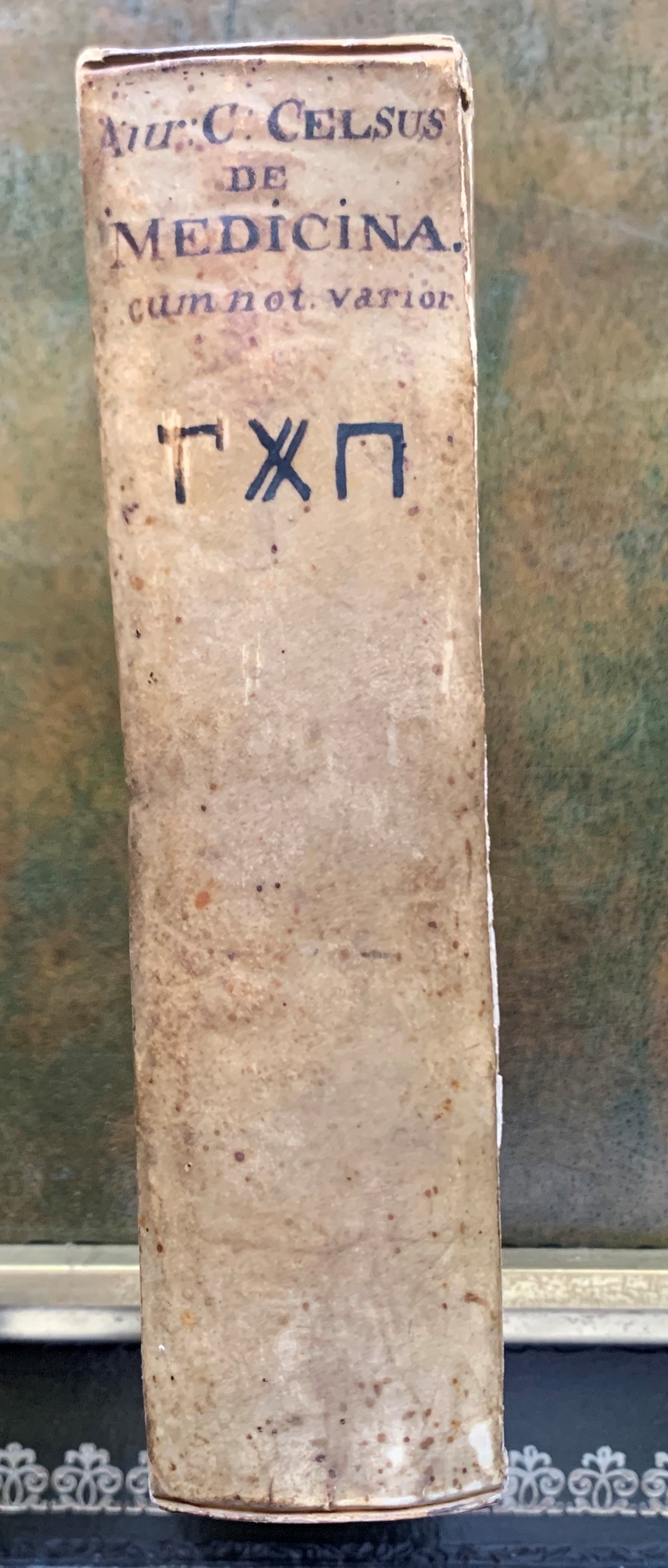
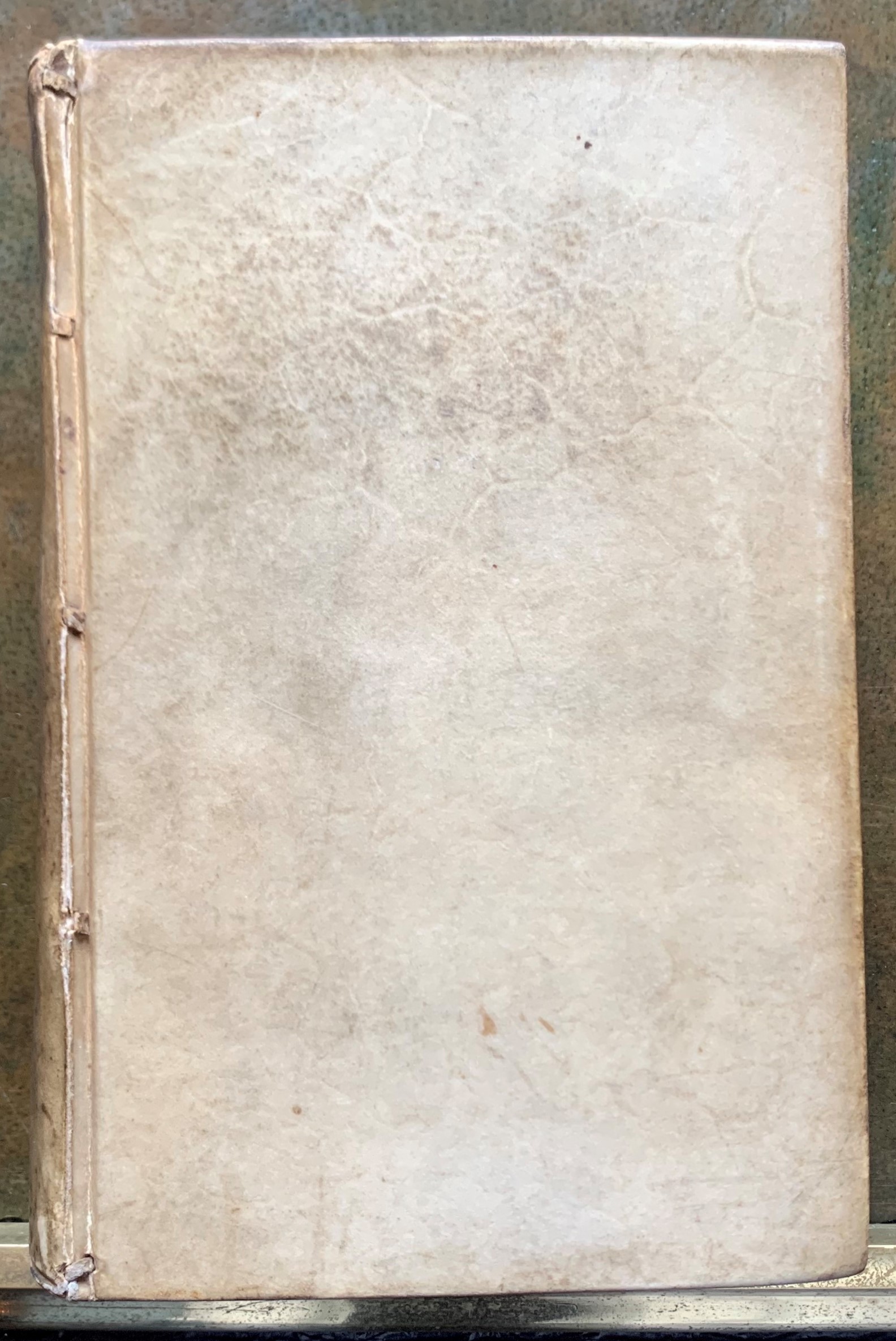
Above Left: Spine view, De medicina. Alter, ut ab almeloveenio editus est. A. 1713.
Above Right: Back view, De medicina. Alter, ut ab almeloveenio editus est. A. 1713.
Originally written in the first century CE, the copy of De Medicina in the IMSS’s library is “newer”— from 1713—written almost sixteen centuries after the original text, copied by Theodoor Almeloveen. The copy in the IMSS holdings is in the Octavo format, which describes the size of the book that results from folding each original printed sheet into eight leaves (or sixteen pages). The oldest known copies that currently exist are from the 9th century, with the first print copy popping up in the late 1400’s by Alamanus Nicolaus Laurentii in Florence (Norman, 2014). Our codex here at IMSS is covered in leather and is a printed version. Within the first few pages are an image imprint of the publisher Joannem Wolters and a portrait of the original author Aulus Cornelius Celsus.
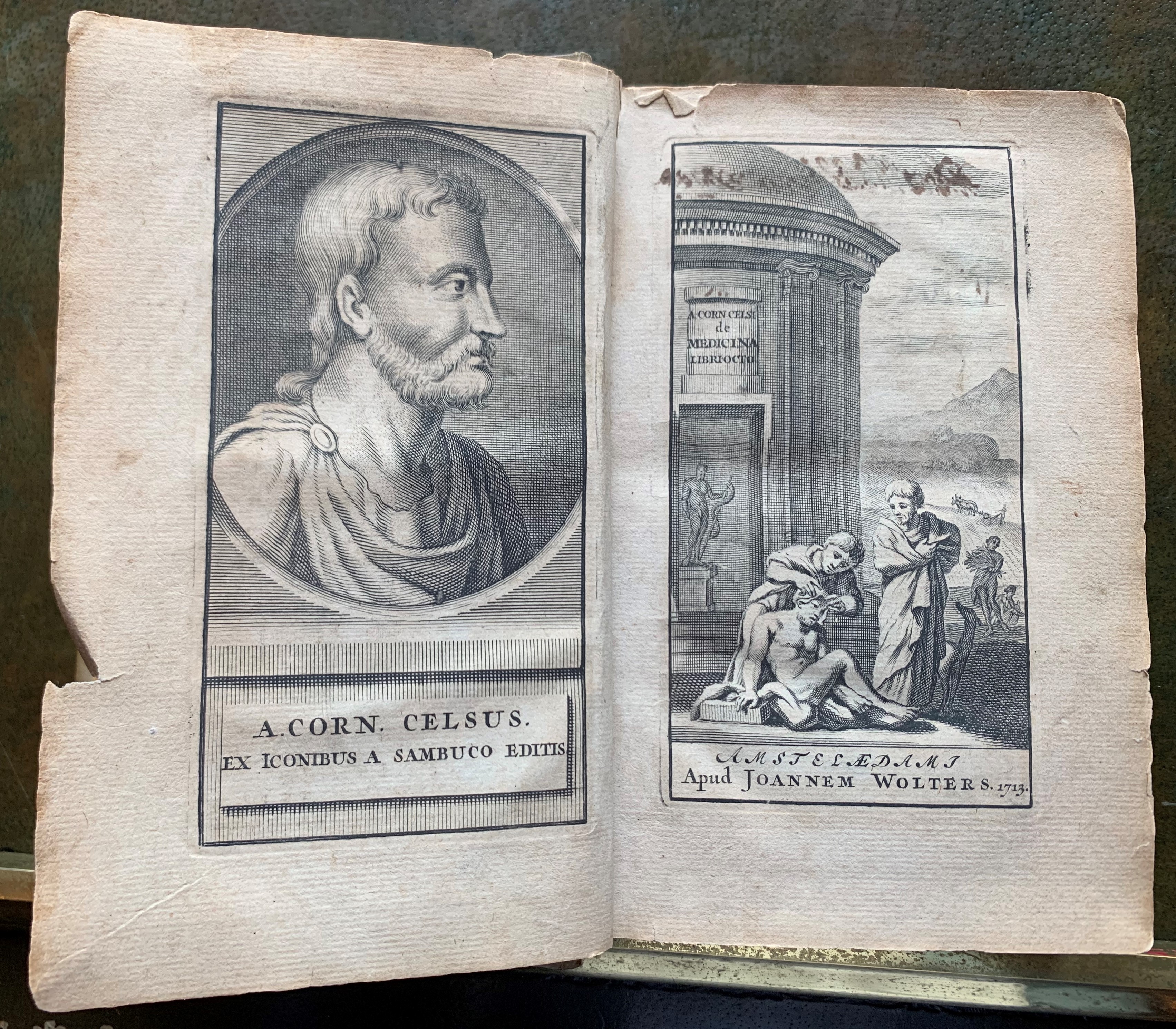
Not much is known of the man named Aulus Cornelius Celsus (25 BCE to c. 50 CE) (Norman, 2014), the supposed author of the encyclopedias that include De Medicina. Part of a larger set of works detailing topics that include “agriculture, military science, rhetoric, government, law, philosophy and medicine” (Norman, 2014), De Medicina provides important insights into what the practice of medicine looked like in the time of the Romans. Only the books of medicine, however, survived intact, with just small parts of the other texts having been discovered (De Medicina). After the Hippocratic writings on medicine, De Medicina is actually the oldest medical text ever written, specifically in Western medicine (Norman, 2014). There is some debate among scholars as to whether De Medicina was a Latin translation from an earlier Greek text—though they are unsure of the origins if that is the case (Thayer, 2005). The way the encyclopedia is arranged also hints at this potential history, because it mimics works by Greek authors Hippocrates and Asclepiades, with the order of writings starting with the diet, moving on to pharmacology, and finally detailing surgical procedures (World Digital Library). Another big debate includes whether Cornelius Celsus was actually a practicing physician (Thayer, 2005).
Historically, physicians were considered as those who “practiced medicine for money” (Norman, 2014), and it seems unlikely that a “work so complete and so accurate” (Thayer, 2005) like De Medicina could come from anyone other than a physician. However, according to one critic of this hypothesis, there are a few reasons Celsus may not have been a practicing physician—it was not uncommon for a Roman man who was the head of a household to have a basic knowledge of medical procedures. Another reason stated is the lack of direct language regarding indecent elements of medicine observed in the text (Thayer, 2005) (which I find to be one of the more interesting details).
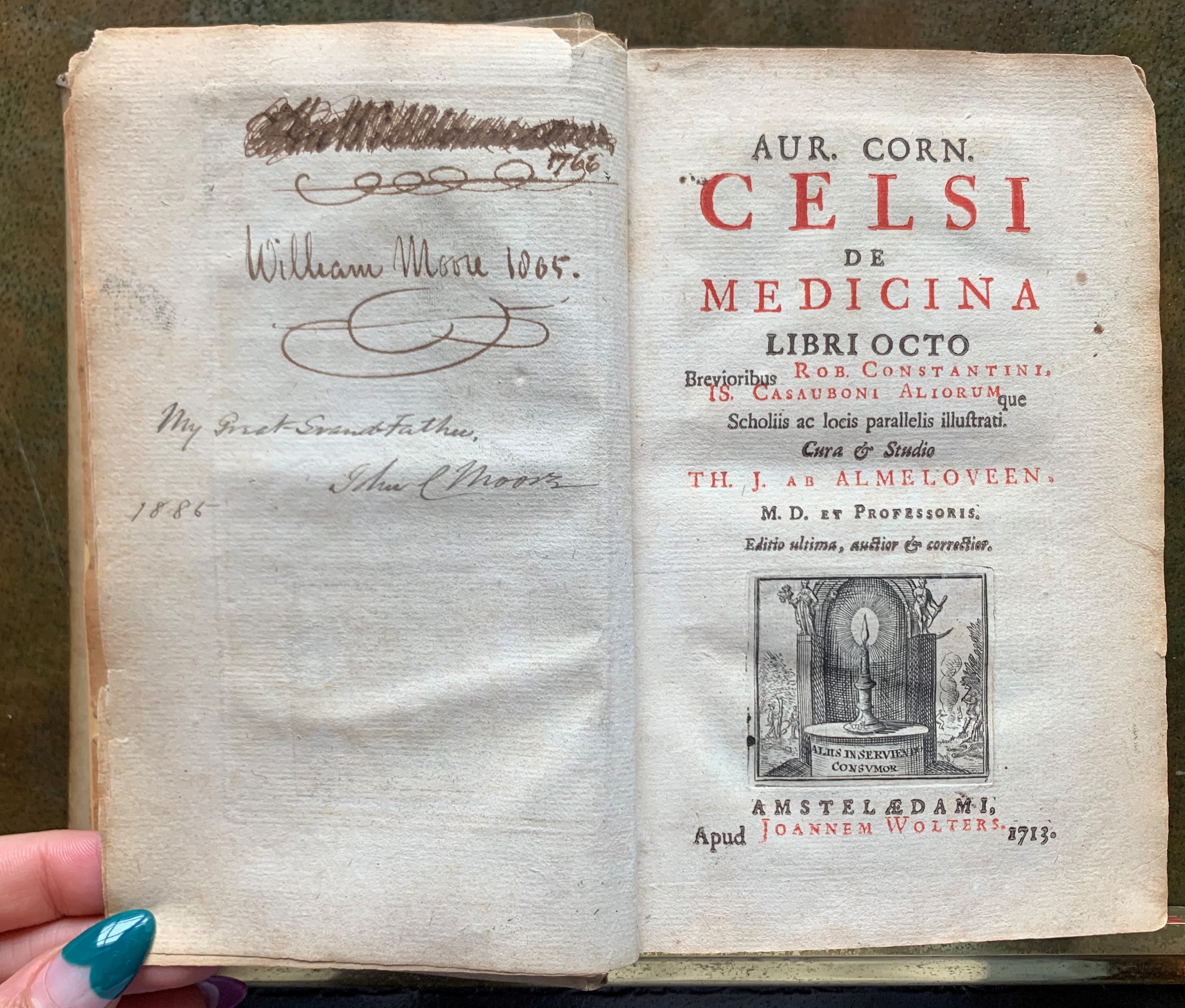
The signatures on the left show us the past owners of the book, including (illegible) 1766, William Moore 1865, My Great-GrandFather, John C. Moore 1886. The book was donated by John Constable Moore in 1933.
Regardless, De Medicina contains an amazing account of medical knowledge, given the period in which it was written. For instance, Celsus first recorded the fundamental signs of inflammation, the preparation of medicinal remedies, and a number of surgical procedures (for example: the removal of bladder stones and setting of bone fractures) (Norman, 2014). The style and writing of the book is also highly praised, especially because of its completeness and symmetry as well as its elegant language (Thayer, 2005). Interestingly, De Medicina was rediscovered in 1426 after being lost during the Middle Ages (Norman, 2014). This makes us wonder how the practice of medicine may have been affected while this important text was lost. We are excited to have a copy of De Medicina within the IMSS holdings, given its largely impactful influence on modern medicine as we know it today.
Works Cited:
De medicina. Alter, ut ab almeloveenio editus est. A. 1713. Alter, ut a constantino a. 1566. [two volumes]. (n.d.). Retrieved october 17, 2019, from https://www.iberlibro.com/medicina-alter-almeloveenio-editus-est-1713/22920892427/bd.
Norman, J. (2014, April 30). Celsus’s De Medicina, the Oldest Western Medical Document after the Hippocratic Writings, and How it Survived the Middle Ages. Retrieved October 17, 2019, from http://www.historyofinformation.com/detail.php?entryid=2111.
Thayer, B. (2005, March 19). CELSUS ON MEDICINE. Retrieved October 17, 2019, from http://penelope.uchicago.edu/Thayer/E/Roman/Texts/Celsus/Introduction*.html.
World Digital Library. (n.d.). On Medicine. Retrieved October 17, 2019, from https://www.wdl.org/en/item/11618/.
Nada Abdelrahim is the current Max Thorek Manuscript and Rare Book Library Intern at IMSS. She is currently pursuing her MSLIS at the University of Illinois at Urbana-Champaign. She is also currently a Youth Programming Librarian and writing fellow at Off Kilter Co. Nada is a strong advocate for equitable access to information, social justice in the information professions and has difficulty saying no to anything she enjoys (which is everything).
